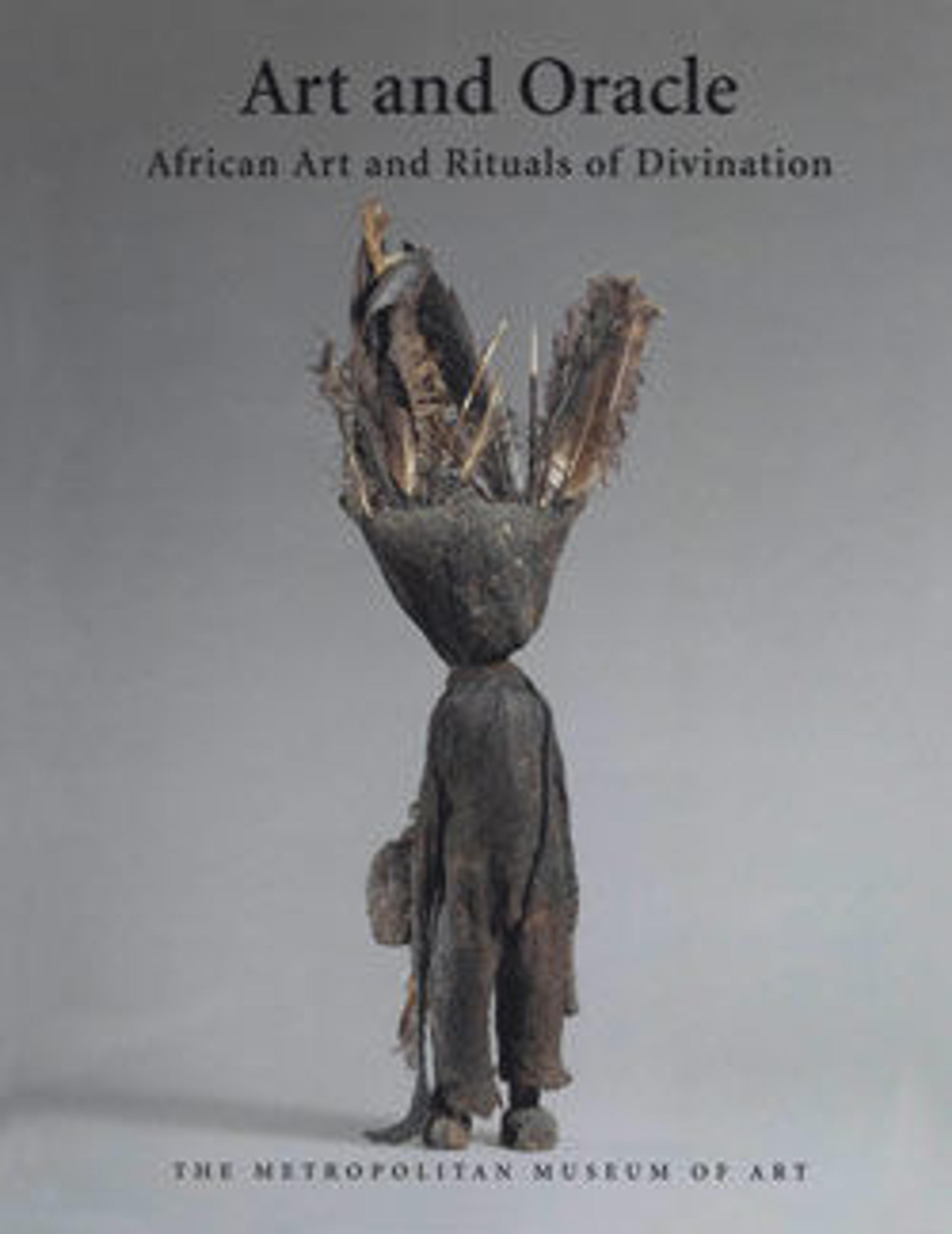Divination Instrument (Galukoji)
The integration of a face into the design of this kinetic mechanism - a divination instrument (ngombo) known as galukoji - suggests that its actions are guided by some spiritual force. This type of innovative Pende divination apparatus appears to have been developed during an especially active period of experimentation in response to accelerated changes in Pende society. Radical transformations that resulted from colonial rule over the region fueled local demands for a greater number and variety of analytic tools that might afford insight into unfamiliar experiences.
The first galukoji instrument documented in the West was acquired in 1928 near Koshimbanda, on the northwestern border of the Central Pende region (it is now in the Africa Museum in Tervuren, Belgium). Leon de Sousberghe, during his stay in Central Pende region in 1951-1953, observed that this type of divination instrument was in widespread use throughout the area. However, shortly thereafter the practice of galukoji appears to have been abandoned, and the artifacts themselves discarded; thus, reliance on this particular divinatory technique probably spanned a generation of practitioners between the 1920s and the 1950s.
This work is a classic example of the distinctive genre of galukoji instruments, featuring a disembodied head facing outward from the end of a mechanism that resembles a wooden "accordion" gate and that is similarly expandable and retractable. The accordion mechanism consists of nine intersecting segments of palm bamboo, each about 30 centimeters long, joined at the top, midpoint, and base with raffia fiber. In this example, each end of the bamboo segments is charged with empowering matter - alternating blue and white tubular glass beads inserted into the tips, with an animal tail projecting from the last of these, and red seeds embedded in the segments' undersides. The head takes the form of a miniature mask, which is bound with raffia fiber to the two foremost bamboo segments. The surface of the face is covered with red kaolin, and the top and sides are adorned with chicken or guinea-fowl feathers. The facial features are crudely rendered; below the pronounced forehead, the brow forms a continuous line above closed eyes.
During consultation, the diviner would lay the instrument on his knees with the head facing up. He held it by inserting his finger at some point in the crossbars while names of individuals suspected of crimes were recited. In response to the mention of the culprit's name, the galukoji sprang upward, approaching the diviner's head. The oracle's protruding forehead evokes the possession of dangerous knowledge -- such as the diviner's awareness of an individual's crime -- and also accentuates the dynamism of the action that propels it forward to expose and bring wrongdoing to light.
The first galukoji instrument documented in the West was acquired in 1928 near Koshimbanda, on the northwestern border of the Central Pende region (it is now in the Africa Museum in Tervuren, Belgium). Leon de Sousberghe, during his stay in Central Pende region in 1951-1953, observed that this type of divination instrument was in widespread use throughout the area. However, shortly thereafter the practice of galukoji appears to have been abandoned, and the artifacts themselves discarded; thus, reliance on this particular divinatory technique probably spanned a generation of practitioners between the 1920s and the 1950s.
This work is a classic example of the distinctive genre of galukoji instruments, featuring a disembodied head facing outward from the end of a mechanism that resembles a wooden "accordion" gate and that is similarly expandable and retractable. The accordion mechanism consists of nine intersecting segments of palm bamboo, each about 30 centimeters long, joined at the top, midpoint, and base with raffia fiber. In this example, each end of the bamboo segments is charged with empowering matter - alternating blue and white tubular glass beads inserted into the tips, with an animal tail projecting from the last of these, and red seeds embedded in the segments' undersides. The head takes the form of a miniature mask, which is bound with raffia fiber to the two foremost bamboo segments. The surface of the face is covered with red kaolin, and the top and sides are adorned with chicken or guinea-fowl feathers. The facial features are crudely rendered; below the pronounced forehead, the brow forms a continuous line above closed eyes.
During consultation, the diviner would lay the instrument on his knees with the head facing up. He held it by inserting his finger at some point in the crossbars while names of individuals suspected of crimes were recited. In response to the mention of the culprit's name, the galukoji sprang upward, approaching the diviner's head. The oracle's protruding forehead evokes the possession of dangerous knowledge -- such as the diviner's awareness of an individual's crime -- and also accentuates the dynamism of the action that propels it forward to expose and bring wrongdoing to light.
Artwork Details
- Title:Divination Instrument (Galukoji)
- Date:20th century
- Geography:Democratic Republic of the Congo
- Culture:Pende peoples
- Medium:Wood, bamboo, feathers, fiber, beads, abrus seeds, camwood powder
- Dimensions:15 1/2 in. H x 38 in. W (39.4 x 96.5cm)
- Classification:Wood-Implements
- Credit Line:Gift of Ruth Trunzo, 1976
- Object Number:1976.410.1
- Curatorial Department: The Michael C. Rockefeller Wing
More Artwork
Research Resources
The Met provides unparalleled resources for research and welcomes an international community of students and scholars. The Met's Open Access API is where creators and researchers can connect to the The Met collection. Open Access data and public domain images are available for unrestricted commercial and noncommercial use without permission or fee.
To request images under copyright and other restrictions, please use this Image Request form.
Feedback
We continue to research and examine historical and cultural context for objects in The Met collection. If you have comments or questions about this object record, please contact us using the form below. The Museum looks forward to receiving your comments.
